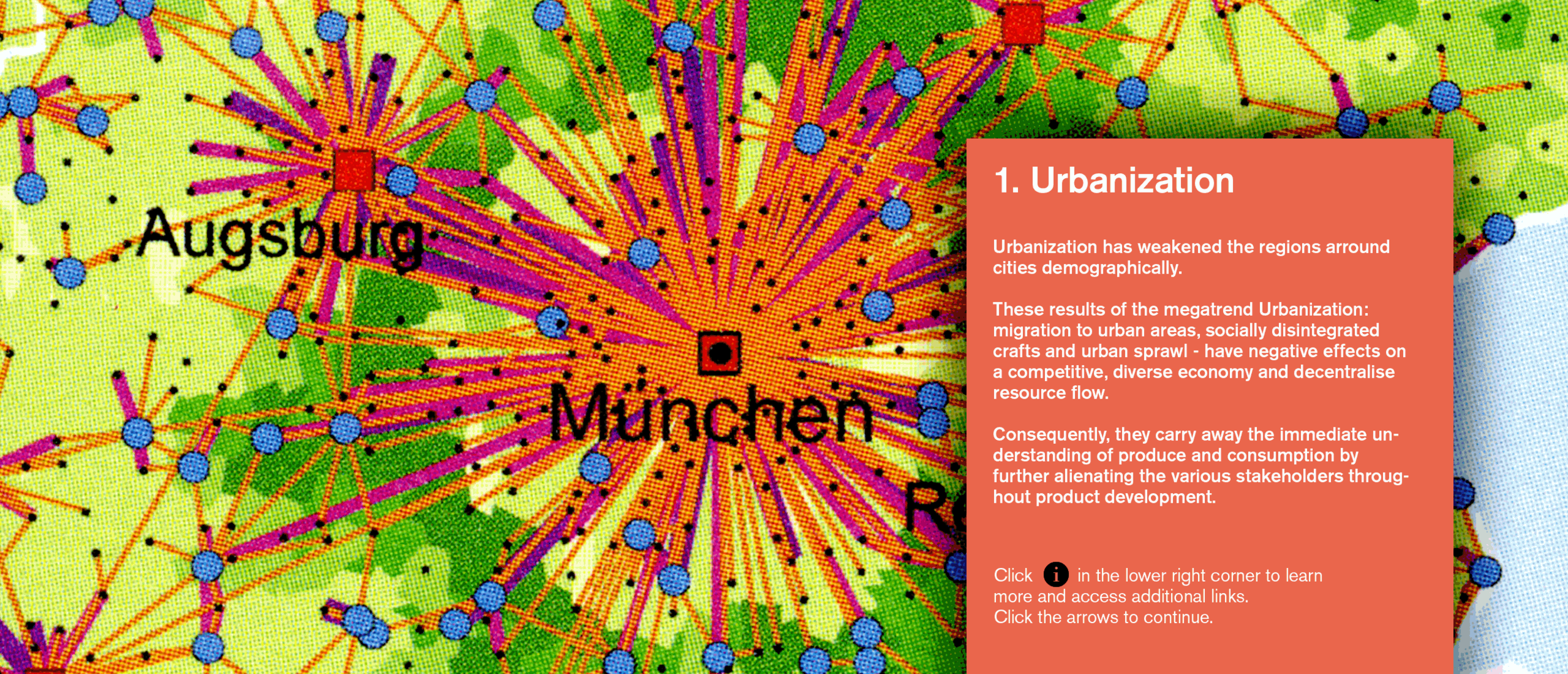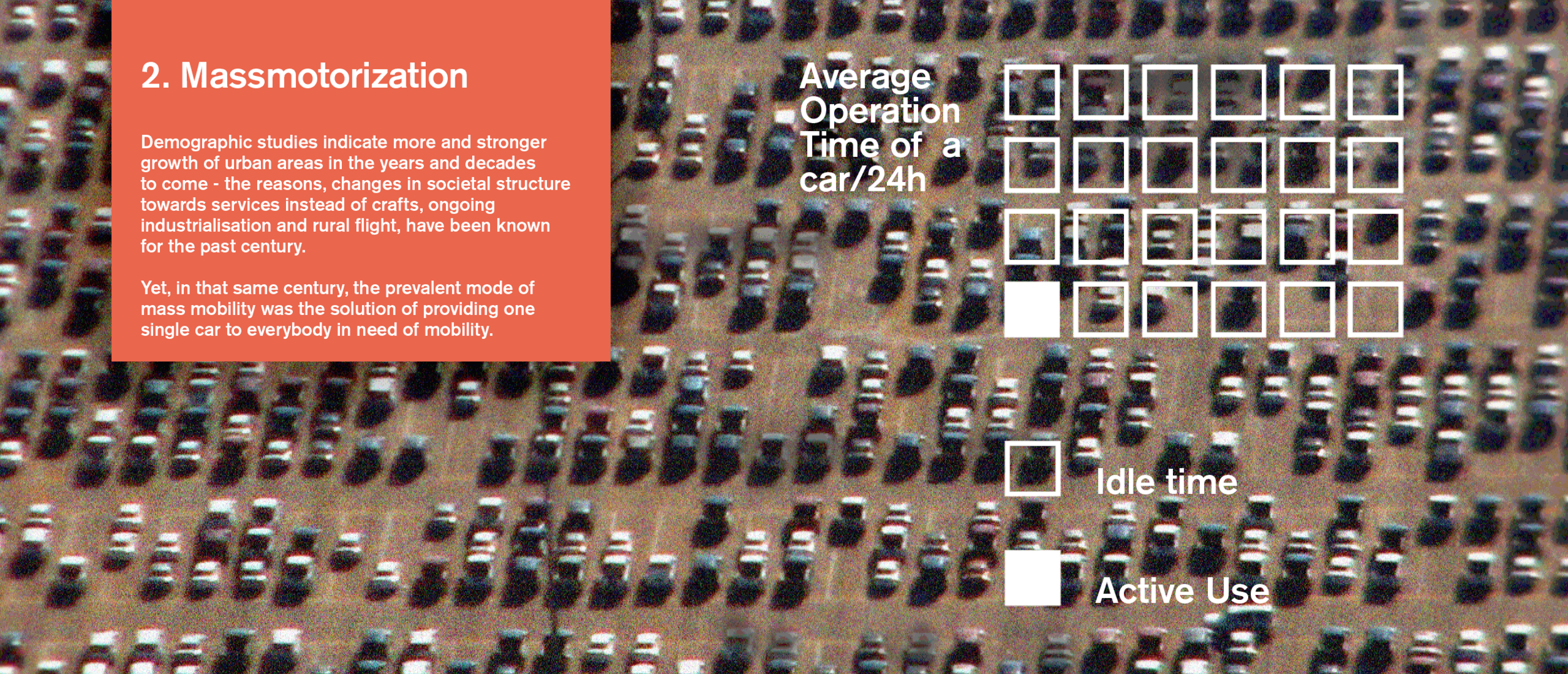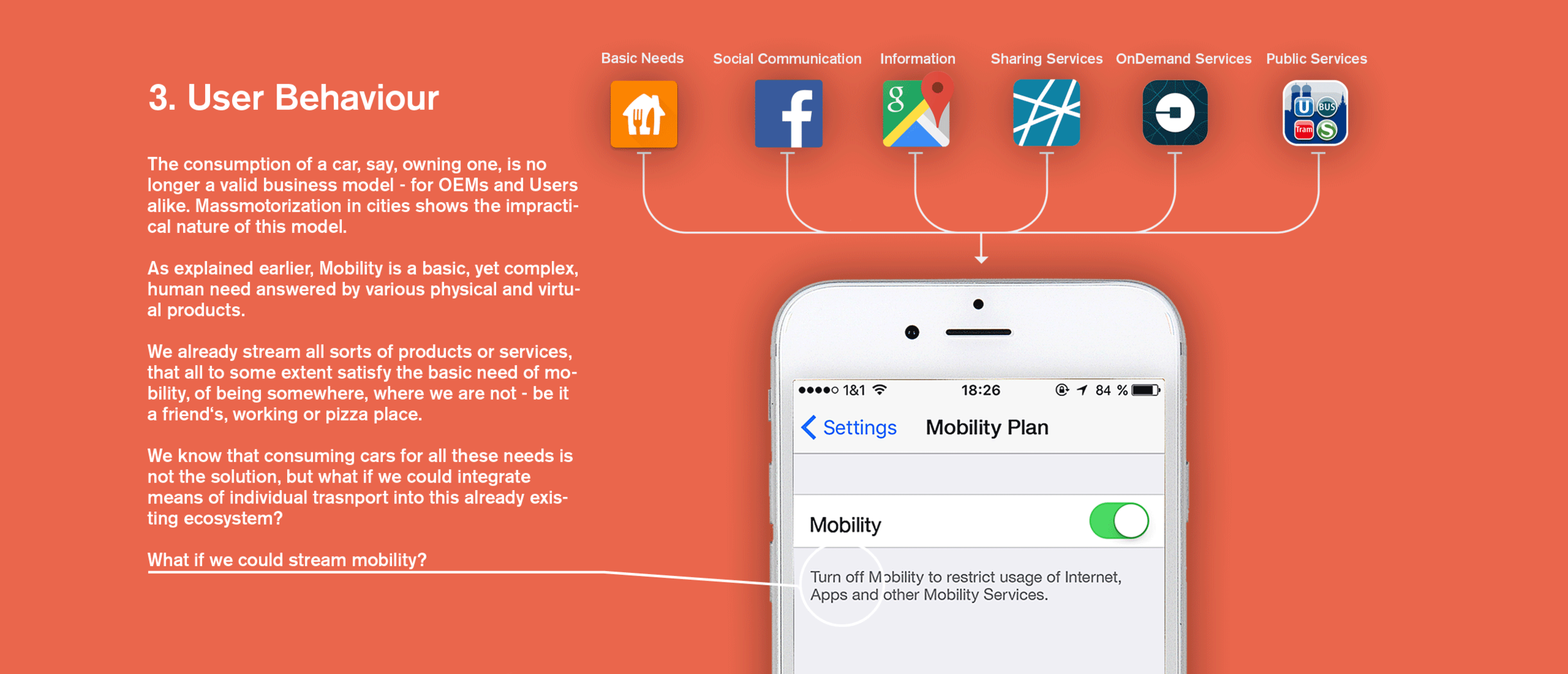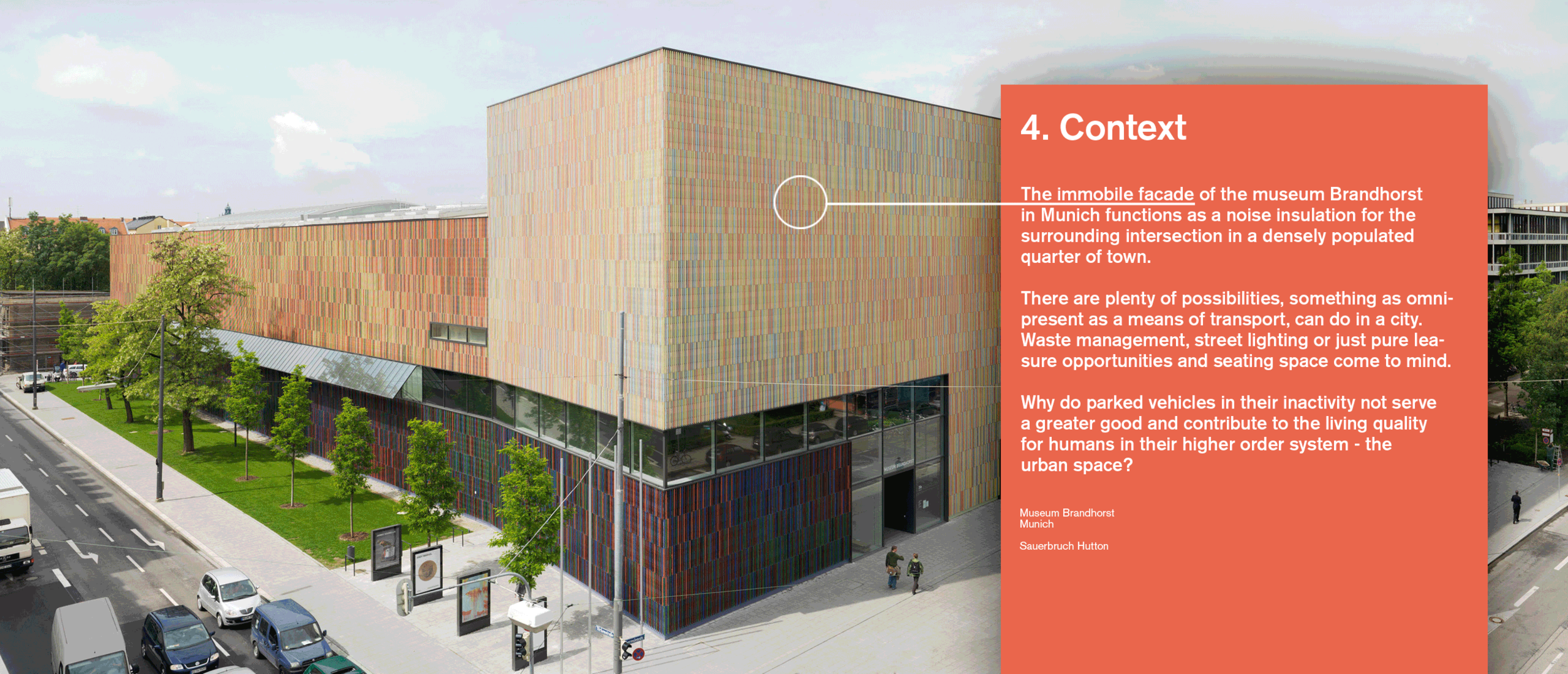
The interdependencies between modern cities and the surrounding regions are not negligible - the social and everyday requirements on mobility in urbanization have significant impact on culture and societal structure.
Statistically, Cars seal urban space during 23 hours of the day - by being parked. And even during their single hour of daily operation, they negatively effect the living quality of their surroundings with noise- and dirt pollution. This very space is already rare in today‘s cities. So it would be a necessity to design vehicles with utmost respect to the limited resources - not only in terms of materials used in manufacture, but also in universal resources as space, time and quality of life.
A sustainable future architecture of mobility has to take into account these demographic realities - and use them as a framework, a specification book to facilitate societal change - by design.

Supplying every individual with an individual product for - in this case - mobility, is not a responsible decision, considering the discrepance between available resources like space or manufacturing effort and the resulting, vastly inefficient transport solution.
This economically driven approach of an endless supply and demand chain hinders the necessary examination of the requirements of individual mass-mobility.
Specifically this means that, beginning with the difficulties of mass-mobility in urban agglomerations, the density of traffic from suburban and urban areas blocks vast amounts of streetspace during most times of the day. This generally negative connotation of "commuting" in its sociocultural understanding renders visible how very little the actual function of the car, individual mobility for everybody by owning one, is delivered, when it is most needed.
This is one everyday-indicator everybody can contemplate - to understand how our global consumerist zeitgeist is not compatible with the finite biocapacity of space, time and material.

Mobility is a means of transcending time and space in order to survive as social individuals. We already consume this mobility in different ways, be it with a bike or a train, with facebook and other social applications of the internet. In order for us to consume that mobility, we need a tool - in these examples that would be the bicycle or the train with its waggons and the service journey on the way to the ticket - with social apps it would the smartphone or computer and its data usage via the communication network providers infrastructure.
Over both ends of the spectrum, be it bikes or intercontinental flight, we have developed sophisticated means of control. For instance we can control the data usage of certain apps, as well as we do and want know about our car’s mileage and if the measures on the datasheet concur with real life. And if not, we are provided with possibilities such as “eco” or “sport” driving modes in state of the art cars.
So, considering both methods of mobility mentioned above solve the same basic human need, why not combine them into a hybrid, a fluent transition between immaterial and physical mobility through services?
What if we had the possibility to stream mobility?

Private and Public transport and its fleets in private and federal hand already occupy and hence represent, in their volume, a significant amount of cityspace - as do buildings like the Museum Brandhorst.
The basic problem is the fatal lack of responsibility that springs from a limited scope of mind in designing mobility. Everything is connected, thus neglecting systemic reciprocities deprives Design of all it significance and relevance.
A vehicle has to understand itself as part of its surrounding system - the city - and try to implement itself as harmonic as possible into its urban context and interact with its inhabitants on a basis of mutual respect. The isolated view a car currently sheds on the process of its design, function and consequent attitude can only be described as antisocial.
Why shouldn‘t they then consequently take on the same responsibility beyond their core use of mobility like buildings do, beyond their ability to provide space to live?
Context




